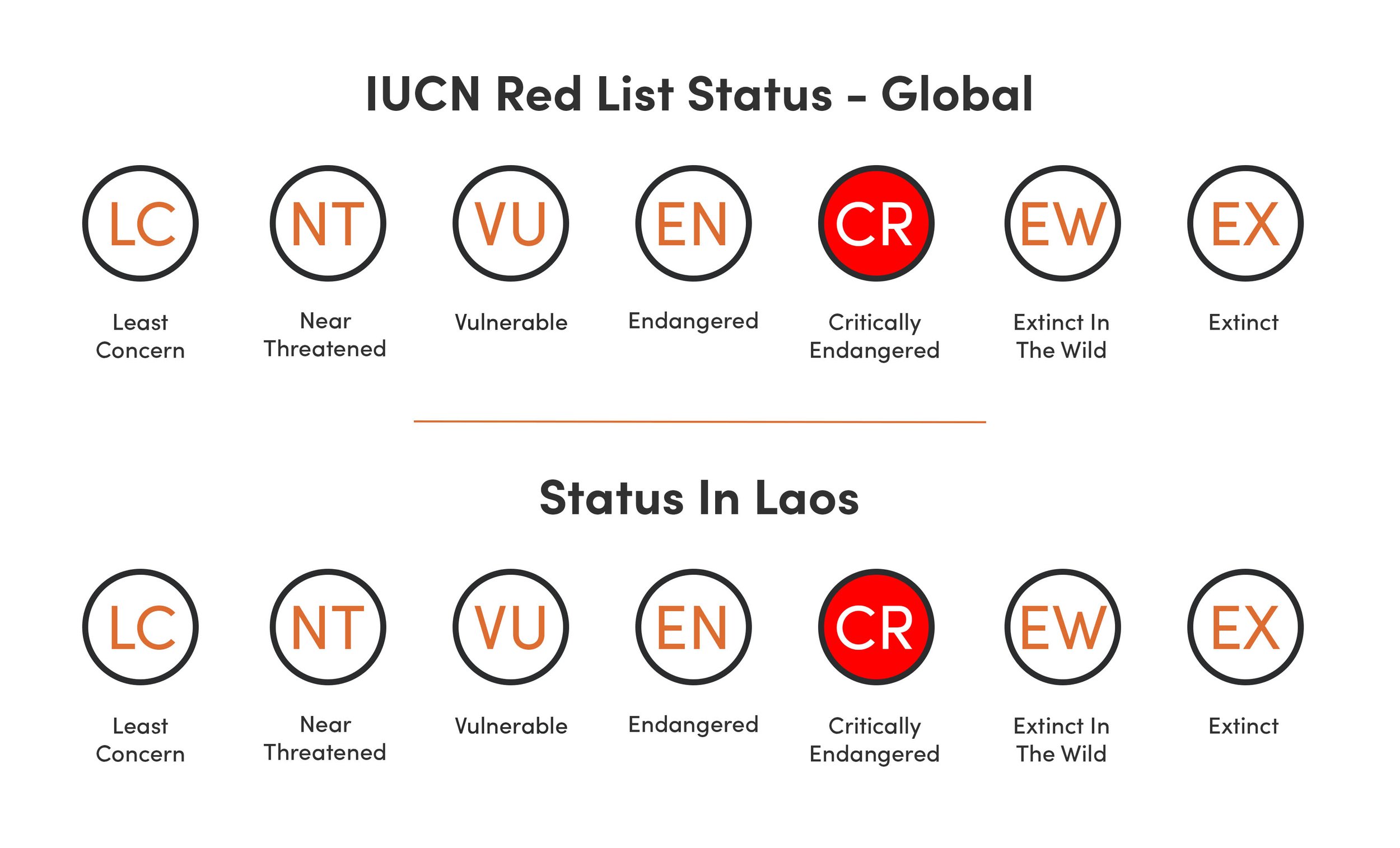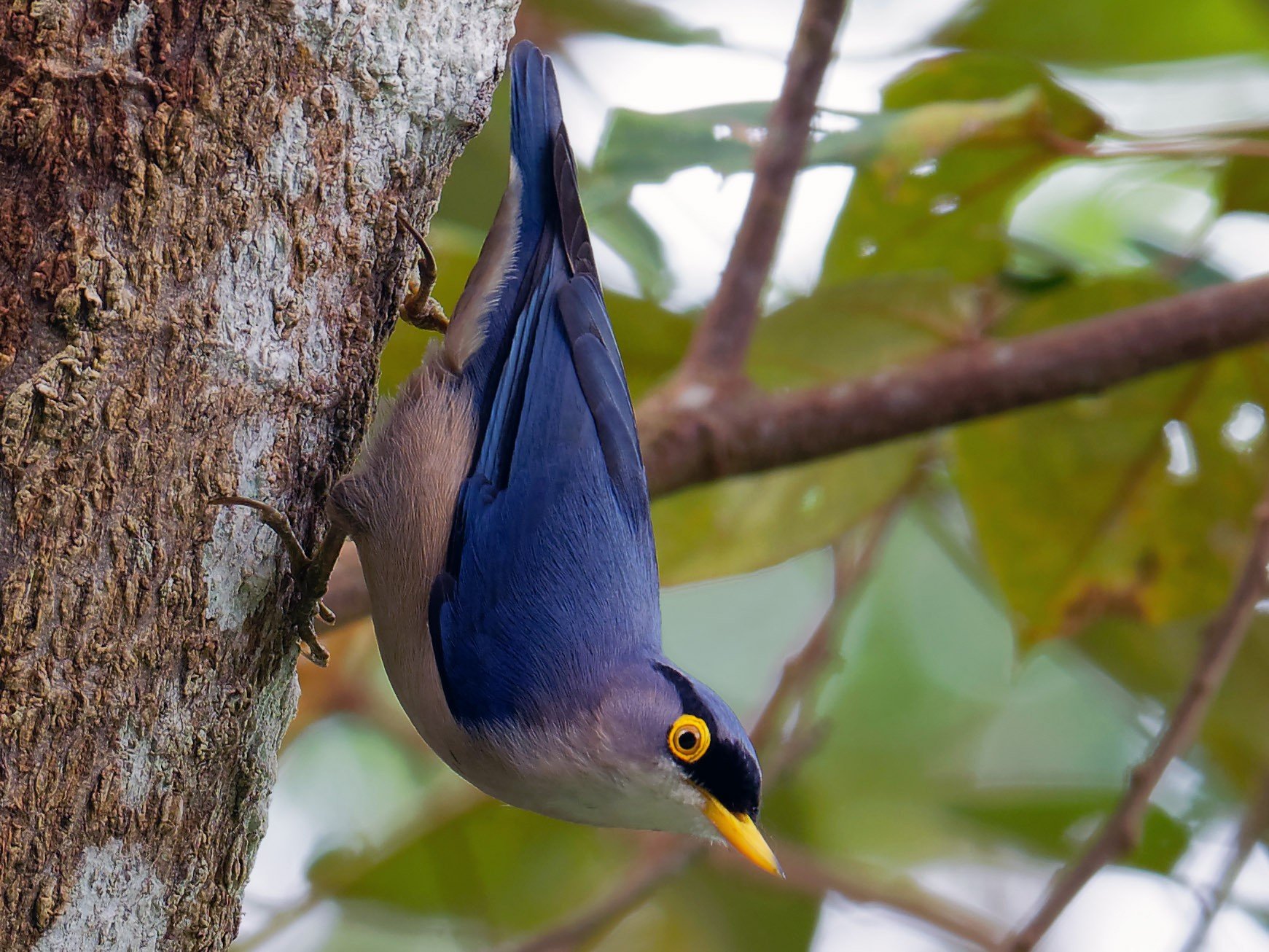
Laos
Common Name: Southern White Cheeked Gibbon
Scientific Name: Nomascus siki
Image: © montysly

Fact
Southern White Cheeked Gibbons have the longest arms of any primate relative to body size.
About
Overview:
Southern White Cheeked Gibbons are found in Vietnam and Laos, within the Indo-Burma biodiversity hotspot. They are not a uniform colour; unweaned juveniles are a light brown, turning to black after weaning.
Lifespan:
They are known to live between 25-28 years in the wild.
Habitat:
They are found in the canopies of lowland broadleaf evergreen and karst forests.
When to spot:
They can be seen all year round, however due to living so high in the canopy (elevations of 98-328 feet) and having such loud calls, they are heard more often than they are seen.
Diet:
They are mainly frugivorous (feed on fruit), but are also known to eat leaves and invertebrates.

Fact
Southern White Cheeked Gibbons form monogamous relationships that stay together for life and raise their young together. Young gibbons leave their parents at around 3-6 years old.
How To Identify
They have long arms that can be twice as long as their body. They are born a beige/yellow colour but change to black with white cheeks once they reach around 1 ½ years old. At 5-7 years old, when they reach sexual maturity, the males remain black but the females change back to the beige/yellow colouration with a black streak on their crown.
Vulnerability Status
IUCN Red List status: Critically Endangered
Country status: Critically Endangered
Population size: Their numbers are decreasing and it is estimated that there are only 600 mature individuals left in the wild.
The Southern White-cheeked Gibbon is listed as Endangered on the IUCN Red List of Species because its numbers have fallen by 50% over a 45 year period (three generations) prior to 2008.
Threats
Key threats to species:
Hunting for meat
Illegal pet trade
Habitat loss through logging and agricultural land change
Importance of the species:
As frugivores, they are important seed dispersers, helping the forests to maintain growth to be able to provide for the other species that depend on them.

Fact
Southern White Cheeked Gibbons move between trees by swinging from hand to hand, a technique known as branchiation.
Conservation Actions
The Wildlife Conservation Society (WCS) is working directly with the Laos government to improve the management of protected areas with populations of all four species of crested gibbons: Western Black Crested Gibbon (Nomascus concolor); Northern White-cheeked Gibbon (N. leucogenys); Southern White-cheeked Gibbon (N. siki); and Yellow-cheeked Gibbon (N. gabriellae).
They are also helping with awareness-raising in villages around protected areas and ongoing enforcement of the National Wildlife Law of 2008 which is showing positive results in protecting gibbon populations.
Further Information
Click the title below for further information.
-
The Wildlife Conservation Society (WCS) is a US nonprofit, tax-exempt, private organization established in 1895 that saves wildlife and wild places by understanding critical issues, crafting science-based solutions, and taking conservation actions that benefit nature and humanity.
WCS Lao PDR has successfully implemented 23 projects with the Government of Lao PDR, supported by more than 30 donors.
Common Name: Yellow-billed Nuthatch
Scientific Name: Sitta solangiae
Image: © Vincent Wang

Fact
The species normally travels in small groups or pairs but can occasionally be found in mixed flocks.
About
Overview:
The yellow-billed nuthatch is a small bird native to the forests of Laos, Vietnam and the Chinese island of Hainan. It is notable for its characteristic bright colouring with its bright yellow eyes, blue wings and blue-purple face making it particularly eye-catching.
Lifespan:
The lifespan of this particular species is unknown, however, typically nuthatches are estimated to live between 2 - 3.5 years in the wild.
Habitat:
The species inhabits tropical and subtropical evergreen forests, predominantly in hilly areas. It is estimated to live in areas between 700 - 2,500 metres above sea level.
Diet:
The specific feeding habits of the yellow-billed nuthatch are not known. Most nuthatches feed predominantly on insects and other invertebrates with seeds supplementing their diet in winter.

Fact
Its call is characterised by a short, brisk, rhythmic series of “chit”s.
How To Identify
Yellow-billed nuthatches have a bright blue back and wings, a purple and black face and, as the name suggests, a bright yellow bill. They have yellow eyes which are surrounded by a bright yellow ring from which a black “eyebrow” protrudes backwards. Underparts are grey and white. It is approximately 12.5 - 13.5 cm in length.
Vulnerability Status
IUCN Red List status: Near threatened
Country status: Near threatened
Population size: Unknown
Threats
Key threats to species:
The main threat to the species is from habitat loss due to deforestation. This occurs due to agricultural and harvesting activities in the forested areas that the yellow-billed nuthatch inhabits. In Laos specifically, the key causes of deforestation are slash and burn agriculture, agricultural expansion (in part due to population growth) and illegal logging.

Fact
Nuthatches are often observed and pictured hanging upside down from tree trunks. It is thought that this provides them a different perspective whilst foraging, enabling them to locate food that other birds may have missed.
Conservation Actions
As is the case with many species, deforestation is a leading cause of the decline in yellow-billed nuthatch populations. Therefore, supporting and championing any initiatives that engage local communities to slow deforestation rates is an important way that habitat loss can be reduced.
In 2021 an important step was made in this regard as the World Bank and Laos signed an agreement whereby payments will be paid to Laos for verified reductions in carbon dioxide emissions caused by deforestation.







